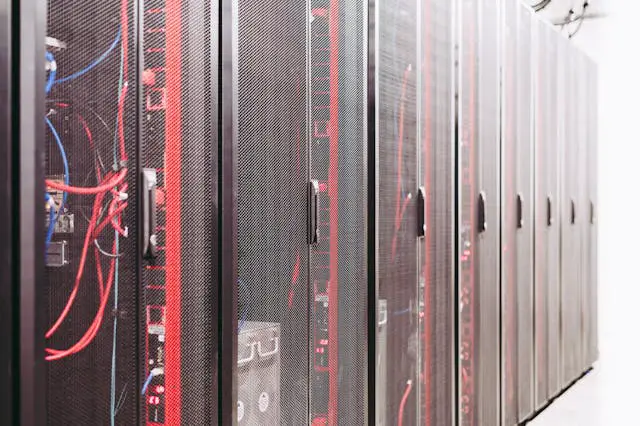
Data centers are critical for the functioning of the modern economy. Without them, there would be no Facebook. YouTube, or cloud services of any kind. We wouldn’t even have AI on everyone’s phones and laptops!
However, data centers are more than just server farms. These impressive installations rely on an array of technologies to keep them functioning and performing as people expect long-term.
But what are they doing to push the envelope and excel? That’s what we talk about here. This post looks at some of the remarkable technologies now going into data centers to support their construction and operation.
The New Technologies In Data Center Construction
Data center construction technologies are moving forward rapidly. Modern data centers are normally developed on an integrated package of a few key technologies, working towards the attainment of their operations and dependability.
This process begins with the selection of the most appropriate site that would offer a perfect blend of power supply, and ideal climatic conditions and is relatively closer to the more important networks. Once chosen, construction designs include specially formulated materials as well as designs that especially handle data centers’ challenges including those of heating dissipation, efficiency, and consumption of energy.
High cooling rates are not something new to this infrastructure as servers generate a lot of heat while processing. Conventionally, cooling was based on air conditioning but, in modern data centers, liquid cooling or immersion cooling, where components are directly immersed in non-conductive fluids, is fast becoming the most popular method. Such techniques have reduced energy consumption manifold over older air-based cooling and are one of the essential bases of the sustainability of the facility.
Innovations like raised flooring are helping with this. These provide access under units and also improve airflow by enhancing cooling and air movement. It is also often quite easy to collect the spare heat and pipe it somewhere else in the business, perhaps to provide warmth for the on-site office during the winter.
Furthermore, the physical design of the data center includes redundancy. Critical systems such as power and networking are resistant to failure to maintain continuity in operational up-scheme. The main processing facilities have duplicate and backup power supplies, often including diesel and UPS-driven power supplies in case of power loss and other similar catastrophes. These elements are critical for businesses wanting to protect their assets and thrive long-term.
Energy Efficiency And Sustainability

At the same time, data centers are also embodying principles of energy efficiency and sustainability. Companies want installations that help them achieve their green goals, reducing impact on the planet.
Currently, the world’s data centers consume around 1.5% of total energy consumption. However, this figure is set to grow as digital services explode, leading to perhaps 3% of total electricity usage by the end of the decade.
Energy-intensive applications, such as crypto and AI are also on the rise. Many industry insiders expect demand for these will explode in the coming months and years as more people discover their utility.
For this reason, data center installers are using technologies that help them cut back on energy usage. These include things like energy-efficient hardware and the use of wind turbines. Sometimes, putting solar panels on the roofs of these buildings can contribute meaningfully to their energy usage, although not exclusively.
Server technologies are also making strides in the right direction. Many companies, like Google, are discovering ways they can increase their output while leaving their energy consumption relatively unchanged.
For example, many are now using the powers of deep learning to figure out how best to optimize server farms. These methods involve tracking data and energy needs and then distributing power accordingly. This way, systems don’t waste energy on operations that don’t produce the outputs they want to achieve.
Low-power processors are also playing a role in some server farms. These reduce the amount of energy companies are using considerably, allowing server farms to operate vastly more efficiently.
Servers don’t necessarily have to use low-power chips, and some don’t because of the performance penalty. But often these issues are easy to bypass, simply by using more chips. This approach often changes the performance-per-watt calculation, allowing companies to do more helpful work without adversely affecting the number of operations they can perform.
Put together, much of this effort reflects an industry-wide determination to improve sustainability. Many companies are willing to invest considerable sums of money if it means that they can do more with the resources they have.
Networking And Security Systems
Technology is also finding its way into server networks and security systems. Companies are developing complex infrastructure that allows them to bring everything together into a cohesive whole instead of working with several systems at once.
These approaches are helpful because they are more robust. If one part of the server system looks like it is about to be overwhelmed by traffic, other parts can take over and continue offering a seamless service to those using it.
This approach is especially critical for businesses wanting to minimize downtime. Many companies are wary of allowing their facilities to go down or restart, even for a short period.
Server farms usually have quite complete wiring. Engineers need to connect the servers with storage systems, inverters, energy systems, and inverters in the rest of the facility. These operations require careful planning, so as not to affect the service. Furthermore, networks must be adaptable to changes in data demands. Sometimes, things will be quiet, but other times, they can become noisy. Companies have to address these fluctuations.
Most modern data centers now use fiber optic cables and the latest routers to reduce on-site latency. Cutting down on this improves the experience at the user’s end, making their experience more about the quality of their equipment and connection than that of the server farm. Data centers usually have the best possible connections to external networks, allowing them to perform their functions even better.
Security is also a significant concern in data center design. Many facilities house sensitive information, so engineers must build security into the fabric of the building and infrastructure.
The best sites have robust cybersecurity measures in place to protect data from threats. These usually include a combination of physical and cybersecurity.
For example, many data centers have AI-powered cameras that track the premises and perimeter. These can send alerts to guard staff on duty, telling them that there’s someone nearby who shouldn’t be there. Then they can respond without having to monitor CCTV displays all day.
Data centers also often use biometric access controls. These prevent unauthorized entry while providing personnel with the convenience of simply being able to scan themselves in.
Robust cybersecurity measures are also in place to prevent data losses or breaches. Cloud computing brands regularly use monitoring services that automatically flag suspicious activity and, in some cases, shut down the network in a blink of an eye if there is a security risk. Data is often backed up at multiple sites and sometimes kept in cold storage, away from the internet, for additional protection.
The Future Of Data Center Operations

The future of data storage solutions is going to be exciting. As the technology behind it grows, it will become more economically feasible, enabling even more businesses to benefit from it.
Edge computing may come to play a greater role as the cloud computing network expands. The idea here is to bring servers closer to the people using them, helping them make the most of them regardless of location. Data is closer to the source of generation, reducing latency and distribution issues.
Furthermore, the role of artificial intelligence in data center management will continue to expand. More advanced systems and software will permit closer real-time management of servers, with AI able to make changes in flow rates within seconds. Smart data centers will gain the ability to optimize their processes without a human agent required.
Automation tools may also enable remote data center monitoring and management, allowing firms to set these facilities up in more affordable areas. For example, you could see data centers cropping up in towns that don’t have large populations of IT specialists. These would be ideal for providing local security employment and would cost less because they would be out of the way. Companies would also have the luxury of being able to make them larger, which is essential due to today’s massive computing demands.
Finally, quantum computing could come to data centers. This technology would allow them to help users solve more problems, including those that classical computers simply can’t. Users could then pay for specific quantum computing services to help them crunch the numbers on technical problems they’re facing, like route optimization or cipher keys. Ultimately, the data center is likely to be the pillar of technologies of the future. It is already playing a critical role in cloud computing and AI, turning it into an essential technology going forward. Massive technologies are going into these services to make them better for everyone.










